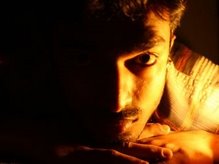C1 and C2 - Cones of two real points whose focused images are P1 and P2 respectively.
L - Lens.
L - Lens.
To solve for a cone, one needs the base diameter and the height, if it is right circular. But for points away from the optical axis the cone is no longer right circular, so in order to solve for it, one needs to know it at two cross sections. Joining these two at all points around it would give you the cones, as shown above. If one can solve this for all points on the sensor, you can then control the focus point through software, post capture. But there is a problem.









